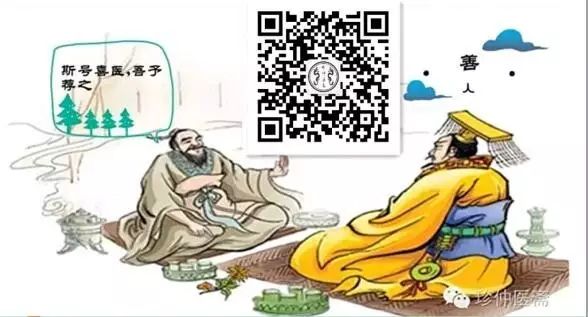

In a broad sense, rheumatic diseases fall under the category of “Bi Zheng” (obstruction syndrome) in Traditional Chinese Medicine (TCM). This includes various conditions such as rheumatoid arthritis, ankylosing spondylitis, osteoarthritis, and others, some of which remain difficult to treat clinically. Zhang Zhongjing elaborated on the principles, methods, and formulas for treating rheumatic diseases in the ‘Jin Kui Yao Lue’, discussing conditions such as spasmodic dampness, wind stroke, and blood obstruction due to deficiency. This article summarizes the differential diagnosis and treatment of rheumatic diseases as described in the ‘Jin Kui Yao Lue’:
-
Expel Wind and Eliminate Dampness — Ma Huang Jia Zhu Tang (Ephedra and Atractylodes Decoction)
In the early stages of rheumatic diseases, patients often experience invasion by wind, cold, and dampness, with cold dampness obstructing Yang Qi, leading to stagnation and pain. Clinically, this is often seen as generalized joint pain, aversion to wind and cold, absence of sweating, abdominal distension, poor appetite, or loose stools, with a floating and tight pulse.
This pattern is similar to that described in the section on spasmodic dampness in the Ma Huang Jia Zhu Tang. The treatment involves inducing sweating to disperse cold and expel dampness. In this formula, Bai Zhu (Atractylodes) expels dampness, while Ma Huang (Ephedra) induces sweating without causing excessive sweating, and Zhu (Atractylodes) works in conjunction with Ma Huang to address both exterior and interior dampness. This formula is suitable for the initial onset of rheumatic diseases with wind and cold on the exterior. If wind is predominant, one may add Qiang Huo (Notopterygium) and Fang Feng (Siler); if dampness is predominant, add Fang Ji (Stephania) and Fu Ling (Poria); if cold is predominant, add Chuan Wu (Aconite) and Liu Ji Nu (Liu Jun Zi).
-
Tonify Qi and Warm the Channels, Harmonize the Nutrients and Unblock Obstruction — Huang Qi Gui Zhi Wu Wu Tang (Astragalus and Cinnamon Twig Five Ingredient Decoction)
In rheumatic diseases such as cervical spondylosis and lumbar spondylosis, one often sees numbness and pain in the limbs, which can be triggered or worsened by cold. Patients may experience weakness in the limbs, or generalized pain, with a pale and swollen tongue and a weak pulse. The pathogenesis is often due to deficiency of both Qi and blood, with Qi deficiency leading to blood stasis, resulting in insufficient nourishment to the muscles and tendons, causing numbness. This pattern is similar to blood obstruction, where “blood obstruction is characterized by both Yin and Yang being weak, with a weak pulse at the cun position, and external symptoms of numbness in the body, resembling wind obstruction; Huang Qi Gui Zhi Wu Wu Tang is indicated.” In this formula, Huang Qi (Astragalus) tonifies the Wei Qi and promotes Qi flow; Gui Zhi (Cinnamon Twig) warms the channels and disperses cold dampness, working with Huang Qi to reach the exterior and warm the blood vessels; Shao Yao (Peony) promotes blood flow and nourishes Yin blood; Sheng Jiang (Ginger) and Da Zao (Jujube) disperse wind and cold, tonifying the blood and harmonizing the Ying and Wei. Although this formula does not heavily utilize blood-activating herbs, the underlying pathology is rooted in Qi deficiency leading to blood flow issues, thus using Qi tonification to promote blood flow. Huang Qi is used to draw Yin out to Yang, achieving the effect of warming Yang and unblocking obstruction. If wind is predominant, one may add Fang Feng, Chuan Xiong (Szechuan Lovage), Hong Hua (Carthamus), and Ji Xue Teng (Spatholobus) to invigorate blood and dispel wind; if heat is significant, add Bai Hua She She Cao (Oldenlandia) and Huang Qin (Scutellaria) to clear heat; if pain is severe, add San Qi (Notoginseng) and Jiang Huang (Turmeric) to invigorate blood and alleviate pain.
-
Unblock Yang and Resolve Obstruction, Expel Wind and Eliminate Dampness, Harmonize Nutrients and Alleviate Pain — Gui Zhi Shao Yao Zhi Mu Tang (Cinnamon Twig, Peony, and Anemarrhena Decoction)
In the mid-stage of rheumatic diseases, due to the accumulation of wind, cold, and dampness, heat may develop, or the patient may have a pre-existing heat condition in the organs and meridians, and upon re-exposure to wind, cold, and dampness, Qi becomes obstructed, leading to a mix of cold and heat, with both deficiency and excess present. The invasion of wind, cold, and dampness leads to Qi and blood stagnation, which over time transforms into heat, consuming the muscles and leading to a coexistence of cold and heat, with recurrent episodes, depleting Qi and injuring Yin, damaging the spleen, stomach, liver, and kidneys, resulting in a complex interplay of deficiency and excess. Zhang Zhongjing elaborated on this pattern of mixed cold and heat in the ‘Jin Kui Yao Lue’. It states: “For pain in the joints of the limbs, with a frail body, swollen feet, dizziness, shortness of breath, a warm sensation with a desire to vomit, Gui Zhi Shao Yao Zhi Mu Tang is indicated.” Clinically, this presents as severe pain in the joints, limited mobility, localized swelling and heat in the joints, accompanied by sweating, aversion to wind, thirst, dizziness, shortness of breath, a pale tongue with a white coating, and a thin, weak pulse. In this formula, Gui Zhi, Ma Huang, and Fang Feng promote Yang, warm, and disperse cold dampness; Shao Yao and Zhi Mu (Anemarrhena) nourish Yin; Bai Zhu and Fu Zi (Aconite) assist Yang, eliminate dampness, and alleviate pain; Sheng Jiang and Gan Cao (Licorice) harmonize the stomach and regulate the middle. Together, they achieve the effects of unblocking Yang, resolving obstruction, expelling wind, eliminating dampness, and harmonizing nutrients to alleviate pain. Xu Zhongke in his commentary on the ‘Jin Kui Yao Lue’ states: “Gui Zhi promotes Yang, while Zhi Mu and Shao Yao nourish Yin; the reason these three herbs are highlighted in the formula is to demonstrate the coexistence of Yin and Yang obstruction.” He also notes: “To resolve cold, one must address the heat that has become excessive; to treat heat, one must address the obstruction in the liver and kidneys, thus Gui Zhi, Shao Yao, Zhi Mu, and Fu Zi work together to address both cold and heat effectively.” If there are signs of spleen and stomach disharmony, add Fu Ling (Poria) and Sha Ren (Amomum); for women with menstrual irregularities, add Yi Mu Cao (Leonurus) and Ji Xue Teng to regulate menstruation and invigorate blood; for liver and kidney deficiency, add Chuan Xuduan (Dipsacus), Sang Ji Sheng (Mulberry Mistletoe), Gan Di Huang (Rehmannia), and Nu Zhen Zi (Ligustrum) to nourish; for severe pain, add Tian Qi (Notoginseng), Jiang Huang, and Niu Xi (Achyranthes) to invigorate blood and alleviate pain.
-
Warm Yang, Disperse Cold, and Eliminate Dampness — Wu Tou Tang (Aconite Decoction)
Wu Tou Tang is derived from the section on wind stroke and joint diseases, and the full formula can warm Yang, disperse cold, and eliminate dampness, primarily treating cold damp obstruction with severe joint pain, inability to flex or extend, aversion to cold, and preference for warmth, with a white, slippery tongue coating and a submerged, slippery or submerged, tight pulse. This pattern indicates that cold dampness has invaded the joints, causing stagnation that obstructs Qi and blood. The pain from cold and the heaviness from dampness do not shift, leading to severe joint pain and inability to flex or extend. Inability to flex indicates a bone issue, while inability to extend indicates a tendon issue, thus this pattern indicates both tendon and bone involvement. In this formula, Wu Tou (Aconite) is pungent and warm, driving away cold and dispelling dampness; Ma Huang disperses cold and unblocks obstruction; Shao Yao and Gan Cao regulate the meridians and alleviate pain; Bai Mi (Honey) sweetens and mitigates the toxicity of Wu Tou. The combination of these herbs allows the cold dampness to be expelled with sweat, effectively dispelling the pathogen without harming the righteous Qi. Clinically, this is applied to cases of severe cold pain, and in addition to joint pain, one must also assess the tongue for signs of cold dampness or the presence of cold sensations in the limbs to differentiate from internal cold dampness. However, Wu Tou is a potent and toxic herb, which can easily cause poisoning, so it is important to cook it for a longer time and increase the amount of Gan Cao or use Bai Mi to mitigate its toxicity, ensuring safe use of the herbs.
-
Tonify Yin and Warm Yang — Shen Qi Wan (Kidney Qi Pill)
The kidneys govern the bones, while the liver governs the tendons and stores blood. Deficiency of liver and kidney leads to insufficient essence and blood, resulting in inadequate nourishment to the tendons and bones, which can lead to deformities and functional limitations in the limbs, as described in the ‘Jin Kui Yao Lue’: “The pulse at the cun position is submerged and weak; the submerged pulse indicates the kidneys, while the weak pulse indicates the liver. Sweating and entering water is like water injuring the heart; the yellow sweat from the joints is thus named.” Additionally, this deficiency makes one susceptible to invasion by wind, cold, and dampness, leading to obstruction of the Ying and Wei Qi. The interplay between deficiency of liver and kidney essence and the invasion of wind, cold, dampness, phlegm, and stasis can lead to early-stage invasion of wind, cold, damp, and heat, which over time can settle in the liver and kidneys, causing simultaneous issues in the tendons and bones, leading to bone damage and muscle spasms. In the later stages, deficiency of liver and kidney essence and blood leads to an inability to nourish the muscles and bones, making it difficult to dispel the wind, cold, dampness, and heat, exacerbating the growth of pathogenic Qi. Clinically, this often presents as a pale complexion, fatigue, weakness, soreness in the lower back and knees, joint pain, swelling, deformity, limited mobility, morning stiffness in the joints, edema in the lower limbs, frequent urination at night, and a pale tongue with a white coating and tooth marks, along with a thin and weak pulse. Tonifying the liver and kidneys and harmonizing the Ying and Wei is key to treating the later stages of obstruction syndrome, which addresses the root cause. The Ba Wei Shen Qi Wan (Eight Flavor Kidney Qi Pill) can be used with modifications. If Qi and blood deficiency is present, add Huang Qi, Dang Shen (Codonopsis), Ji Xue Teng, and He Shou Wu (Polygonum Multiflorum); for Yin deficiency, add Nu Zhen Zi, Han Lian Cao (Eclipta), and Yu Zhu (Polygonatum); if there is poor appetite and abdominal distension, add Si Jun Zi Tang (Four Gentlemen Decoction) along with Ji Nei Jin (Chicken Inner Gold), Sha Ren, and Gu Ya (Barley Sprouts) to strengthen the spleen and stomach, consolidating the postnatal foundation, promoting the generation of Qi and blood, which can often improve the patient’s constitution, alleviate pain, and achieve the effect of “strengthening the spleen can eliminate dampness, and abundant Qi can dispel stubborn numbness.”
“
· Copyright Statement:
This article is excerpted from the “Chinese Classic Formulas Lecture Series: Clinical Application of Classic Formulas”, published by China Traditional Chinese Medicine Press. Author: Chen Guangxing.

Classics as the foundation, clinical practice as the essence
The path of medicine is long, never forget the original intention
Persistence is difficult, but we are companions【Knowledge Expansion】
The Sequence of Zhang Zhongjing’s Six Meridians Differentiation: Tai Yang → Yang Ming → Shao Yang → Tai Yin → Shao Yin → Jue Yin
Tai Yang Disease
Yang Ming Disease
Shao Yang Disease
Tai Yin Disease
Shao Yin Disease
Jue Yin Disease

※ Long press the QR code, select “Recognize the QR code in the image” to follow the public account!※


